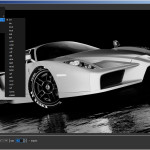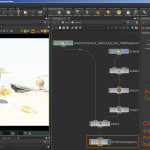OpenColorIO implemented in Maya as nodes to be used within a shading network. This was done to build up my own encapsulated OCIO convenience library that is explcitly ment to be used for the Maya as well as the Houdini nodes. Within the shading networks inside Maya i feel like im abusing OCIO a little, since in this context it is actually grading samples instead of pixels.
Development Milestones
Get to know the OCIO libraries
To get to know the OCIO libraries i created a little standalone tool with Qt, that would expose the OCIO functionality with a GUI.
Implement OCIO with familiar API
Then i integrated OCIO into a node based DCC whose C++ API i am familiar with, which was Maya. I encapsulated the OCIO functionality, so i could reuse the exact same functions later on within Houdini.
Implement OCIO with new API
Having the OCIO part ready for use in a DAG, node based environment, i could focus on trying to master the HDK part and get done with implementing the COP2 nodes.
Details
OCIO as Maya DG nodes
Qt standalone tool
A QT standalone viewer application done for testing and diving into the ocio libraries. You can load ocio configs, grade images and bake LUTs.
OCIO COP2 nodes
Houdini COP2 nodes as equivalents to the Nuke OCIO nodes. Currently in alpha status.
Download
Github
You are very welcome to clone the repo and try to compile the plugin against the OCIO version and platform of your choice, or just have a look at the source code.
H13, VC11, x64, Win
I’m sorry that at the moment i can only offer pre-compiled binaries for H13 on the Windows platform, since this is the platform i developed with. Please also note that the plugin is considered alpha, which might not change soon since i cannot develop active on it at the moment.













